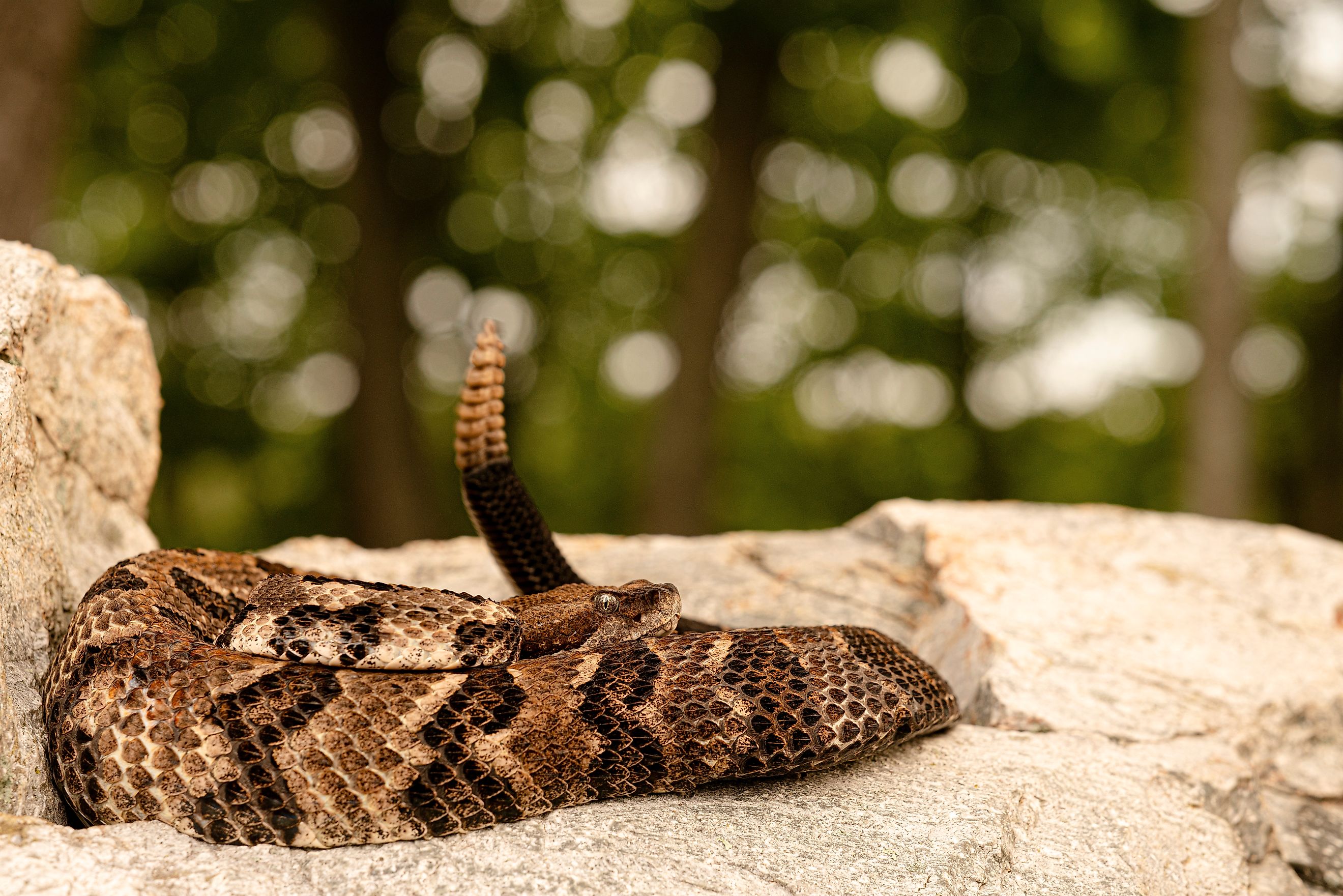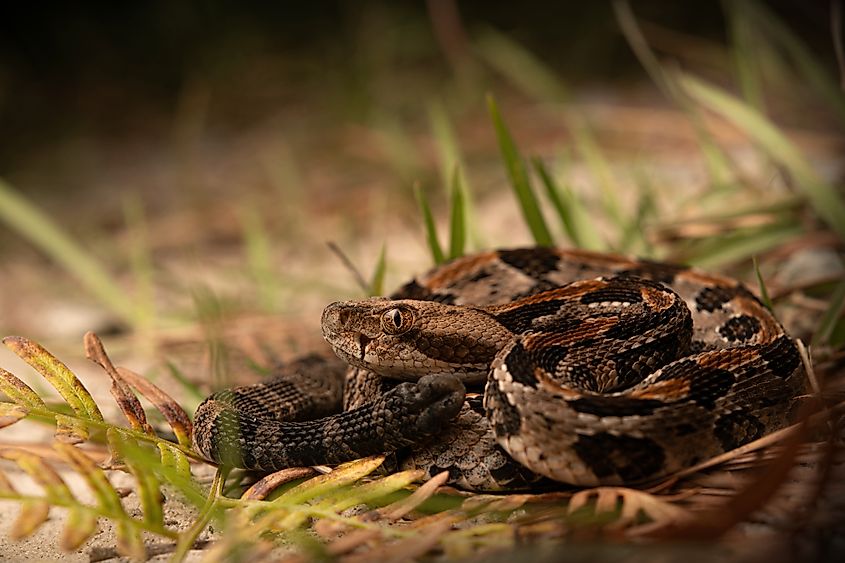
The Venomous Snakes Of Pennsylvania
As a proud Pennsylvania native and avid nature enthusiast, I’ve always been fascinated by the rich biodiversity of our state. Among the most intriguing, and often misunderstood, creatures are the venomous snakes that call Pennsylvania home. With their unique adaptations, stunning appearances, and critical roles in our ecosystem, these serpents deserve our respect and understanding. So, grab your hiking boots and let’s slither into the world of Pennsylvania's venomous snakes!
Meet Pennsylvania's Venomous Trio
Pennsylvania is home to three primary venomous snakes: the Eastern Massasauga (Sistrurus catenatus catenatus), the Northern Copperhead (Agkistrodon contortrix mokasen), and the Timber Rattlesnake (Crotalus horridus). Each of these snakes has its own preferred habitat, behavior, and fascinating facts that make them stand out. Let’s dive into each one!
1. Eastern Massasauga (Sistrurus catenatus catenatus)

The Eastern Massasauga, often referred to as the "little rattlesnake," can be found in wetland areas across Pennsylvania, particularly in the northwestern part of the state. This petite rattlesnake prefers habitats with plenty of cover, such as dense vegetation, to help it stay hidden from predators and to ambush its prey. Some key locations you may encouter this snake include Presque Isle State Park, Tionesta Scenic and Wild Area, and Crawford County.
Despite being venomous, Eastern Massasaugas are relatively shy and tend to avoid confrontation. They are most active during the day in cooler months and become more nocturnal in the heat of summer. With a maximum length of about 30 inches, they sport a distinctive pattern of gray or brown with darker bands, providing excellent camouflage in their natural environment.
The venom of the Eastern Massasauga is primarily hemotoxic, which means it affects the blood and tissue. While a bite can be painful, it is rarely fatal to humans, especially with prompt medical treatment. Symptoms may include swelling, pain at the bite site, and in some cases, nausea. If bitten, it’s crucial to seek medical attention immediately—don't attempt to suck out the venom or apply ice!
2. Northern Copperhead (Agkistrodon contortrix mokasen)

Northern Copperhead (Agkistrodon contortrix mokasen).
The Northern Copperhead is one of the most recognizable snakes in Pennsylvania, often found in wooded areas, rocky hillsides, and along the edges of streams. They thrive in a variety of environments but prefer places that offer plenty of sunlight and cover, such as leaf litter and downed logs. Some common places to find these snakes include, Pennsylvania State Game Lands, Susquehanna River Valley, and the Tamaqua area.
Copperheads are known for their distinctive coloration—coppery-tan bodies with darker brown hourglass patterns. They can grow to about 30 to 40 inches long and are often mistaken for non-venomous species, which can lead to unnecessary fear. Interestingly, they have a unique way of hunting: they will often sit still and blend into their surroundings, relying on their camouflage to ambush small mammals and birds.
The venom of the Northern Copperhead is cytotoxic, causing tissue damage at the bite site. While their bites can be painful and lead to swelling, they are rarely life-threatening due to the low yield of venom they deliver. However, if bitten, it's important to remain calm, immobilize the affected area, and seek medical assistance as soon as possible.
3. Timber Rattlesnake (Crotalus horridus)

Baby timber rattlesnake (Crotalus horridus) close up full body.
The Timber Rattlesnake is the largest and perhaps the most iconic venomous snake in Pennsylvania. They are primarily found in wooded areas, particularly in mountainous regions, where they can be found basking on rocky outcrops. Their preferred habitat includes a mix of deciduous and mixed forests with nearby open fields for hunting. You will find this snake along the Appalachian Trail and many popular state parks, such as Ricketts Glenn State Park and The Delaware Water Gap.
With a length of up to 60 inches, the Timber Rattlesnake boasts a thick body adorned with a striking pattern of black and yellow or gray. Unlike their more timid relatives, Timber Rattlesnakes can be quite defensive when threatened, often rattling their tails as a warning. These snakes are also known for their unique reproductive strategy, giving birth to live young—a rarity among snakes.
The venom of the Timber Rattlesnake is a potent cocktail that can cause significant tissue damage and systemic effects. While fatalities from Timber Rattlesnake bites are rare due to effective medical interventions, immediate medical attention is essential if bitten. Symptoms can include intense pain, swelling, and in severe cases, difficulty breathing or shock.
Safety Tips for Outdoor Adventurers

While encountering a venomous snake in the wild can be thrilling, it's essential to prioritize safety. Here are some tips for your outdoor adventures:
- Stay on the Trails: Stick to well-marked paths when hiking to reduce the chance of accidental encounters.
- Wear Proper Footwear: Sturdy, high-top boots can provide added protection against snake bites.
- Be Alert: Keep an eye out for snakes basking in the sun on rocks or paths, especially during warmer months.
- Don’t Disturb Them: If you encounter a snake, keep your distance and give it space to move away. Most snakes would rather avoid you than engage.
- Know What to Do If Bitten: If you or someone else is bitten, remain calm, immobilize the affected area, and seek medical help immediately.
Final Thoughts
Pennsylvania's venomous snakes are an integral part of our natural ecosystem. Whether you're hiking through the rugged mountains or exploring the lush woodlands, take a moment to appreciate these fascinating creatures from a safe distance. Their unique adaptations and roles in controlling rodent populations make them essential to our environment.
As a Pennsylvania native, I believe that understanding and appreciating our wildlife, including these slithery residents, enriches our outdoor experiences. So, the next time you’re out enjoying the beautiful Pennsylvania landscape, keep your eyes peeled—you never know when you might spot one of our remarkable venomous snakes! Happy hiking, and stay safe!







